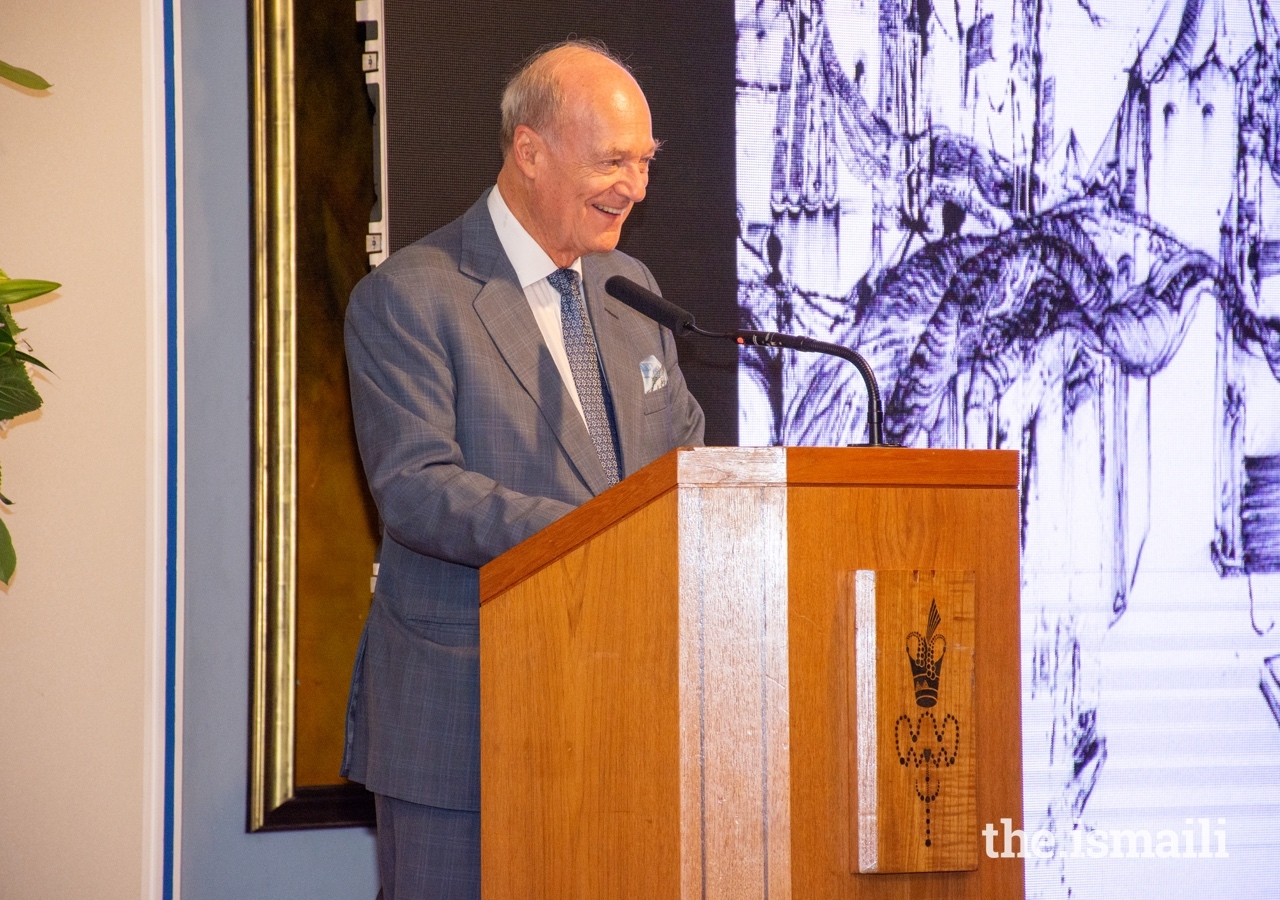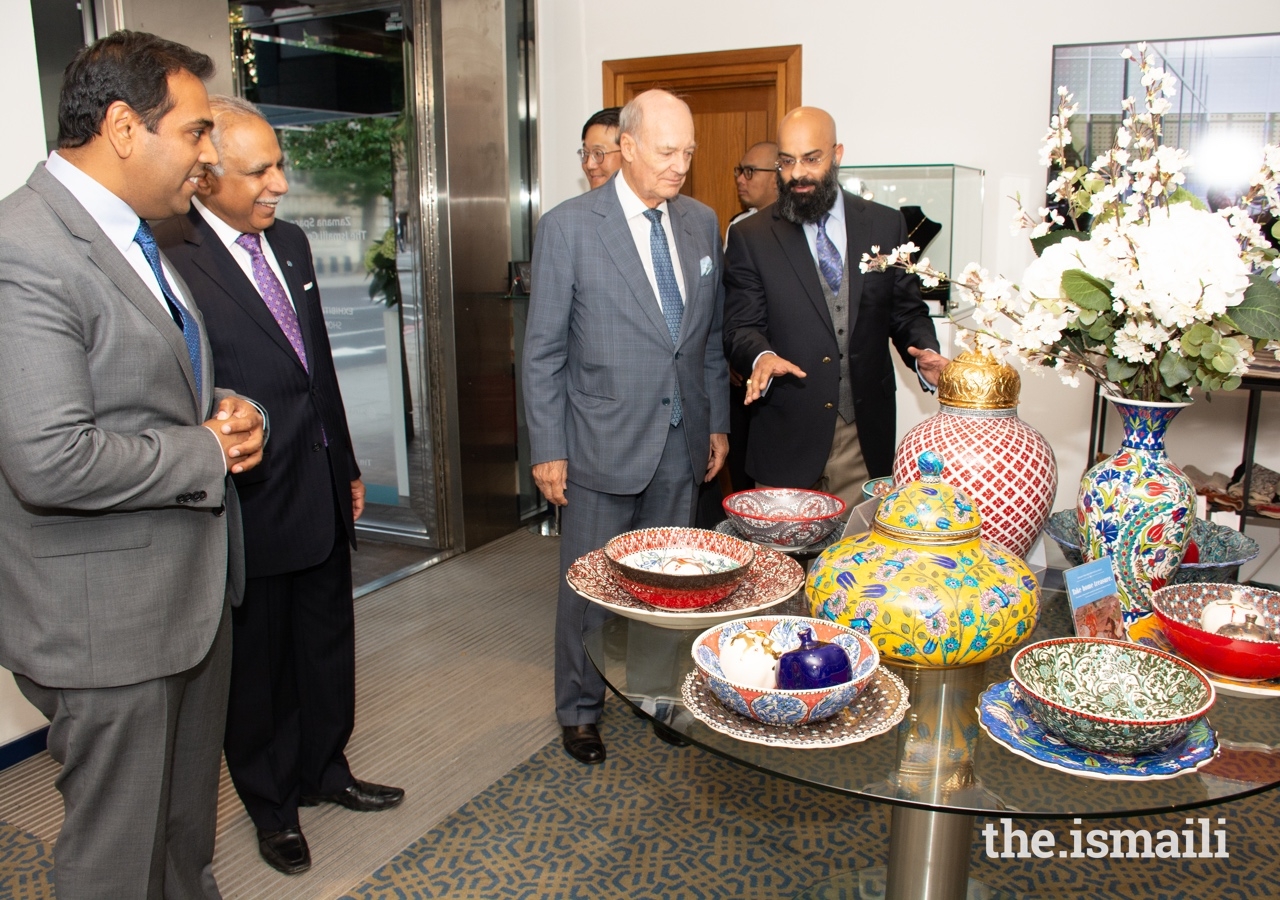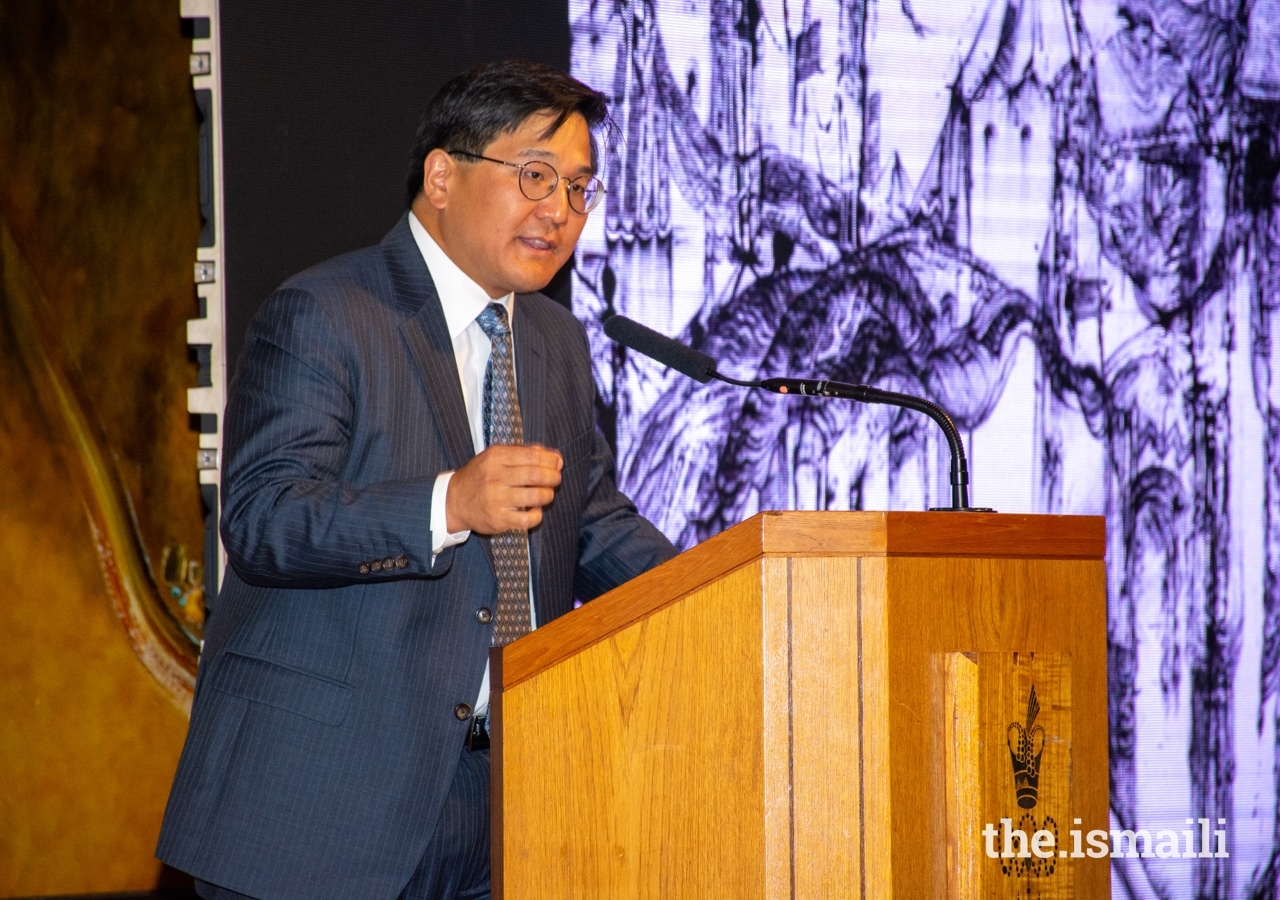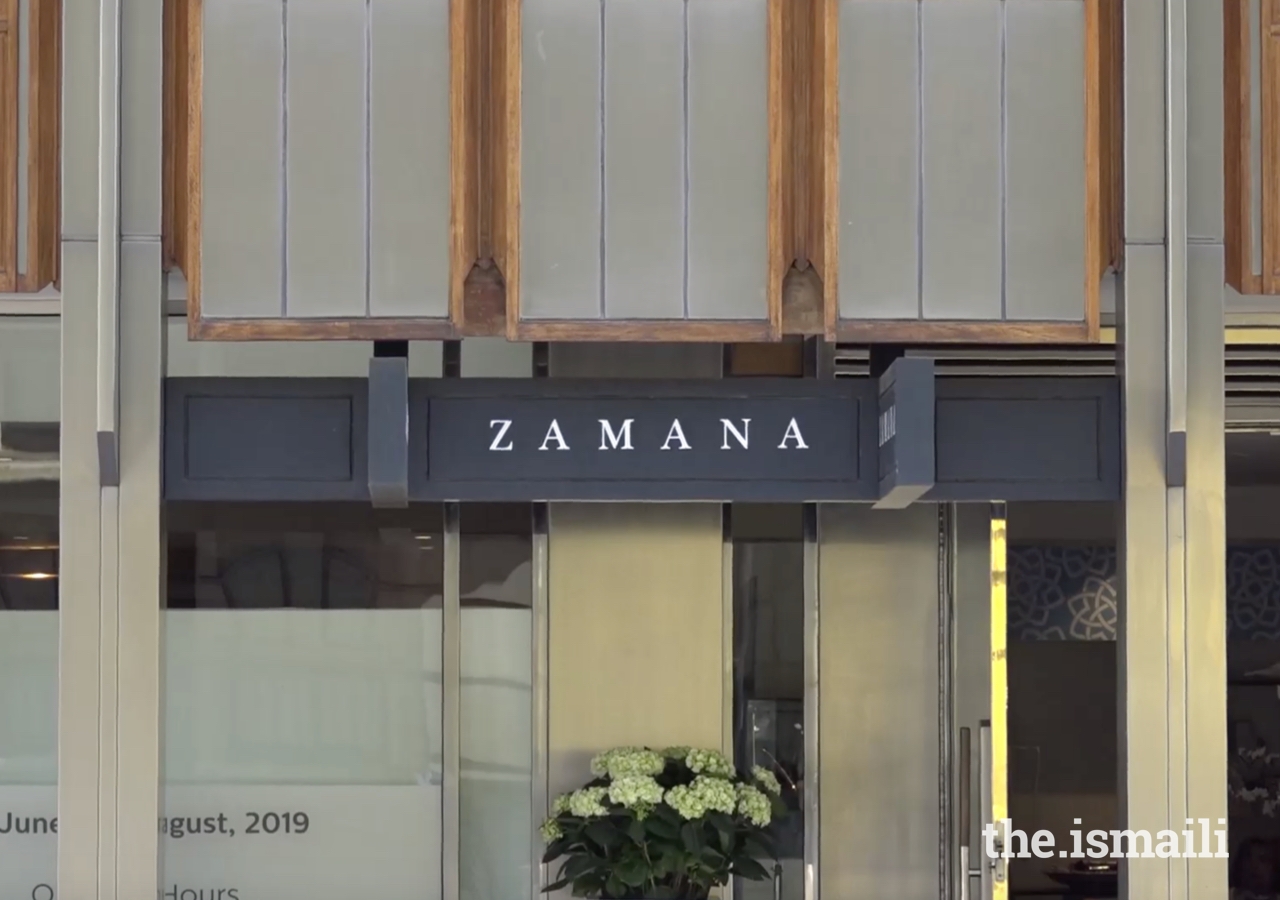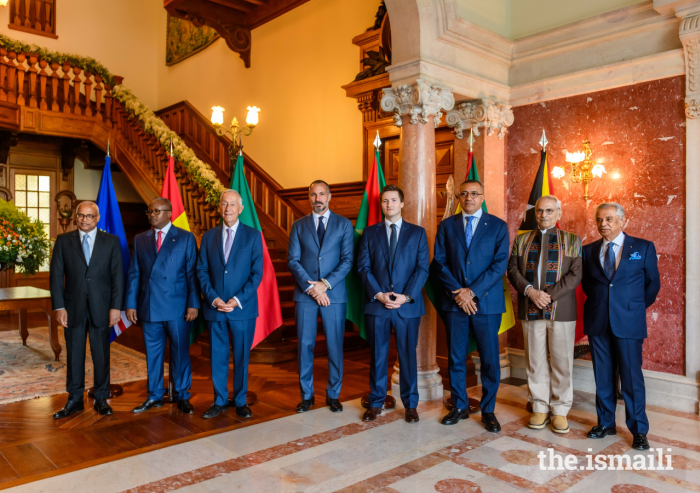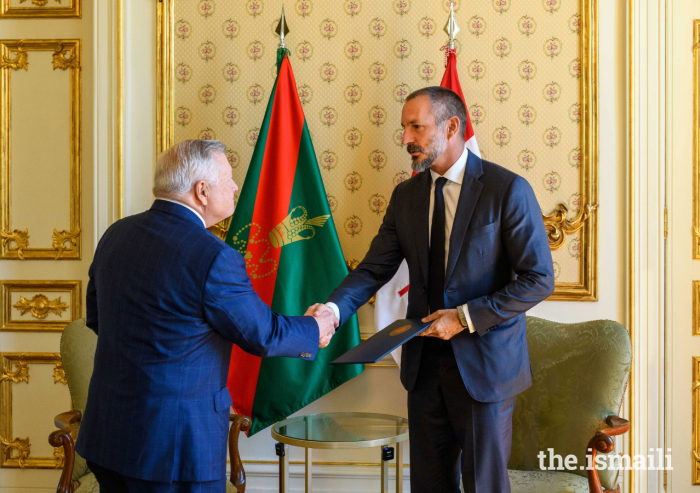In London’s leafy South Kensington neighbourhood, situated within the lower ground floor of the Ismaili Centre, lies the Zamana Space, a multipurpose split-level expanse, facing the prominent Exhibition Road. The appropriately named cultural quarter of the UK’s capital is home to world-renowned museums, concert halls, and galleries, and plays host to arts exhibitions throughout the year.
The newest such exhibit to be installed at the Zamana Space — Seeing Through Babel — was inaugurated on 4 July by Prince Amyn at an evening reception celebrating the partnership between the Ismaili Centre, London and the Aga Khan Museum in Toronto.
Since its opening over three decades ago, the Ismaili Centre, through its architectural design and diverse programming, has been an important feature of London’s cultural quarter. Part of the Centre’s original design, Zamana provided a space to welcome members of the public to visit and learn more about the little-known and lesser-appreciated cultural heritage and languages of the non-Western world.
During its opening ceremony in June 1985, Mawlana Hazar Imam explained the purpose of the space, saying “In a number of Islamic languages, the word Zamana, or Zaman, means ‘the age’ or ‘the epoch.’ It thus reflects the reason for my founding this gallery: to try to improve understanding in the West of the arts and cultures of the Third World, and to do this not simply in terms of historical achievements but in the present day context of their evolution.”
In an effort to shed light on previously unknown stories, concepts, and mediums of art, and in line with a growing appreciation of the arts, in particular those of the Muslim world, the Zamana Space has now reopened to the public after a hiatus. Its first public showcase, Seeing Through Babel, is a solo exhibition by the Syrian-Armenian artist Kevork Mourad.
Inspired by the Old Testament story of Babel — described by Mourad as the moment diversity was created — the artist’s three-dimensional work explores the parable using visual imagery as a means to connect people across the language divide. The six-metre high hanging sculpture took nine days to create in situ, and aims to illustrate the origin-story that lies behind human diversity, and is designed to allow visitors to walk in and around it, allowing for an experiential consideration of its themes; namely the variety and plurality of languages and culture.
Welcoming guests gathered at the reception, Prince Amyn spoke of the growth of interest and flourishing of the arts of the Muslim world over the past 25 years, noting the creation of galleries, festivals, and foundations in the UK to support such cultural endeavours, saying, “Artists have flocked to London, for its art-schools and opportunities to pursue their practices in the rich milieu of this city. I do not think it would be an exaggeration to say that during this time, London has in many ways become a centre for both the historic and the contemporary arts of the Islamic Muslim world. Which brings us to today, and the reopening of the Zamana Space.”
Prince Amyn went on to speak about the Aga Khan Museum, and its mission to foster greater understanding in the world today, through a diversity among and between art in its various forms.
“I am very keen that the arts should speak to each other. The arts reflect our senses, and as our senses talk to each other, so the arts should talk to each other… So as often as possible, I like to see a dialogue between the arts,” he said.
Dr Henry Kim, Director and CEO of the Aga Khan Museum, highlighted the Institution’s global character, saying, “The Aga Khan Museum, even though based in Toronto, is a museum that has true international aspirations. We’re a Museum that is present here in London, also Dubai, also in the States, also across Canada.”
Creating art in public is an integral part of Kevork Mourad’s practice. In a one-of-a-kind undertaking, guests at the event were treated to a unique performance, in which visual art and acoustic music were weaved together live on stage to create a distinct fusion of artistic flair.
Guest attendee Parviz Lakha mentioned the exceptional nature of the event, in a setting befitting the occasion.
“The evening provided an ideal opportunity to explore human stories across cultures and across time. This was a very special, inspiring, and creative event that celebrated diversity and the harmony of co-existence in the most artistic and thought-provoking way,” she said.
Alongside the exhibit, Zamana is also hosting a pop-up store, featuring jewellery, textiles, ceramics, books, object d’art, and other treasures inspired by the Collections at the Aga Khan Museum.
At the close of the event, enchanted guests filed out of the Ismaili Centre, confident in the knowledge that culture unites rather than divides, and with a renewed sense of wonder about art and languages unspoken.
— — —
The Seeing Through Babel exhibit and Aga Khan Museum pop-up store is open to the public at the Ismaili Centre’s Zamana Space until 15 August 2019, and admission is free of charge.

